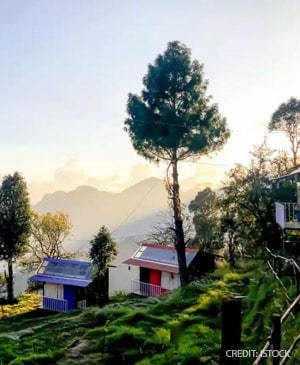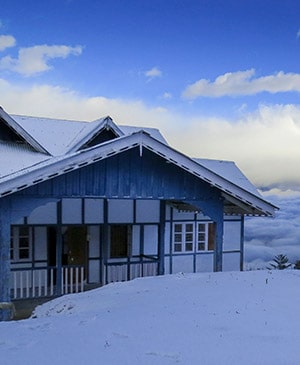Birding in Assam
Think of birding in India, think of Assam. The green and hilly state, located in the northeast of the country, boasts the highest diversity of birds in India, making it a mecca for birders from across the world.
India, with its 1300 different species of birds, holds out an excellent bird-watching prospect, and Assam, home to about 935 of these birds species, is where most of the action is centred. The region’s incredible biodiversity makes it a thriving avifauna habitat, and the range and variety and beauty of the birds spotted here – both endemic and migratory – make the Assam birding tour worth every cent and second spent.
Hardly an hour goes by on our birding trip of Assam when you don’t spot something interesting. The forests, the hills, the wetlands and grasslands of Assam abound with ducks, geese, gulls, pochards, partridges, pheasants, quails, swifts, nightjars, cuckoos, cranes, storks, pelicans, parakeets, hornbills, herons, plovers, lapwings, vultures, woodpeckers, warblers, kingfishers, babblers, bulbuls, magpies, sunbirds, finches, and a lot many birds.
An average day of birding in Assam throws up sights like the Black-Winged Stilts wading through paddy fields or the Greater Adjutant Storks hunting for morning snack or the Yellow Billed Hornbills scouring the ground for lunch. Asian Pied Starlings are a common sight, so are Black-Breasted Babblers and Streak-Throated Barwings. The state bird of Assam, White-winged Wood Duck, is relatively harder to come upon, but a patient and persevering birder is rewarded more often than not with the sightings of avian marvels like Baer’s Pochard, Bengal Florican, Brahminy Duck, Nordmann’s Greenshank, Bar-Headed Goose, Egyptian Vulture, Oriental Stork, Sarus Crane, Large Cormorant and many more intriguing birds of Assam.
Lying in the foothills of the Himalayas, Assam owes its great biodiversity to the convergence of different biomes that create perfect conditions for flora and fauna to flourish. The 17 endemic bird species of Assam are spread out over several Important Birding Areas and wildlife sanctuaries. Lots of migratory birds, water birds, birds of prey, and scavenging birds can be spotted at Kaziranga National Park and Manas Wildlife Sanctuary, both of which have been designated as UNESCO World Heritage Sites and draw in thousands of travellers on India birding holiday every year.
Kaziranga National Park is your best bet to spot the tiger and the rhino besides sighting numbers of winged predators like Pallas’s Fish Eagle, Eastern Imperial Eagle, Greater Spotted Eagle, Lesser Kestrel, and riverine beauties like Blythe’s Kingfisher, Ferruginous Duck, Dalmatian Pelican, Imperial Heron, Black-bellied Tern, Spot-billed Pelican, and graceful waders like Greater Adjutant Stork, Lesser Adjutant Stork, Black-necked stork, and tree dwellers like Great Indian Hornbill, Wreathed Hornbill, Marsh Babblers, and Jerdon’s Babblers.
About 450 species of birds have been spotted at Manas National Park. The park, a Project Tiger reserve, hosts the highest number of the endangered Bengal Florican, and is the stomping ground for hornbills, ducks, fowls, robins, minivets, falcons, ospreys, herons, pheasants, egrets and harriers.
Like Kaziranga and Manas, Nameri National Park, too, is a tiger reserve and a thriving bird habitat. It hosts about 300 species of birds and is preferred by birders for sighting the state bird of Assam, White-winged Wood Duck, and a variety of hornbills, storks, ibisbill, babblers and plovers.
Almost rivalling Nameri National Park is the Pani Dihing Wildlife Sanctuary, located in the east of Assam in an area flanked by the Brahmaputra and Dishang rivers. Established in 1999 as a bird sanctuary, Pani Dihing is home to over 267 bird species. Travellers on birding tours of India often flock to Pani Dihing to sight the rare Griffon vulture and White-rumped vulture. The reserve hosts a range of water birds like the gadwall, Spot-billed duck, wigeon, shoveller, Common Pochard, Red-crested Pochard and Ferruginous Duck.
Speaking of aquatic birds, there are plenty to be seen at Dipor Bil, which is a permanent freshwater lake and one of the largest in the Brahmaputra valley. Here, water birds can be seen in their thousands (sometimes in tens of thousands). Globally threatened birds like Spot-billed Pelican, Baer’s Pochard, Greater Adjutant Stork and Lesser Adjutant Stork have found a new lease of life at this Ramsar site. Dipor Bil has been declared by the Birdlife International as an Important Birding Area for conservation purposes.
Deobali Jalah is another marshy wetland where more than hundred species of birds, mostly aquatic, have been seen. Jerdon’s Bushchat, Bristled Grass Warbler and Greater/Lesser Adjutant Storks are the major attractions here for those on Assam birding trip.
Other prime birding locations in Assam are: Dehing Patkai Wildlife Sanctuary (293 bird species), Orang National Park (220 bird species), Chakrashila Wildlife Sanctuary (119 bird species), Dibru-Saikhowa National Park, Borail Wildlife Sanctuary, Laokhowa-Borachapori Wildlife Sanctuary, Nambor Doigrung Wildlife Sanctuary, and Sonai-Rupai Wildlife Sanctuary.
With so many locations offering excellent prospect of birdwatching in Assam, a birder may be clueless as to where to start. India Birding Tours comes to your aid. We draw upon the experience of long-time birders to create itineraries that put you at the best birding spots of Assam. Our Assam bird watching trip is packed with hours of daily birding and yet has room enough to squeeze in time for you to get to know the place, the people and their culture.
Fun Things To Do On Assam Birding Tour:
- Check out the folk music and tribal dances of Assam
- Witness the celebration of the festivals of Bihu, Bwisagu, Bushu Dima, and Chavang Kut
- Sample the traditional Assamese cuisine
- Get high on local brew
- Visit religious places (not after the brew)
Endemic Birds Of Assam
Streak-throated Barwing, Black-breasted Parrotbill, Blackish-breasted Babbler, Tawny-breasted Wren-Babbler, Snowy-throated Babbler, Broad-billed Warbler, Yellow-vented Warbler, Blyth's Tragopan, Chestnut-breasted Partridge, Beautiful Sibia, Grey Sibia, Striped Laughing Thrush, Rusty-bellied Shortwing, Brown-capped Laughing Thrush, Marsh Babbler, White-napped Yuhina, and Manipur Bush Quail.






